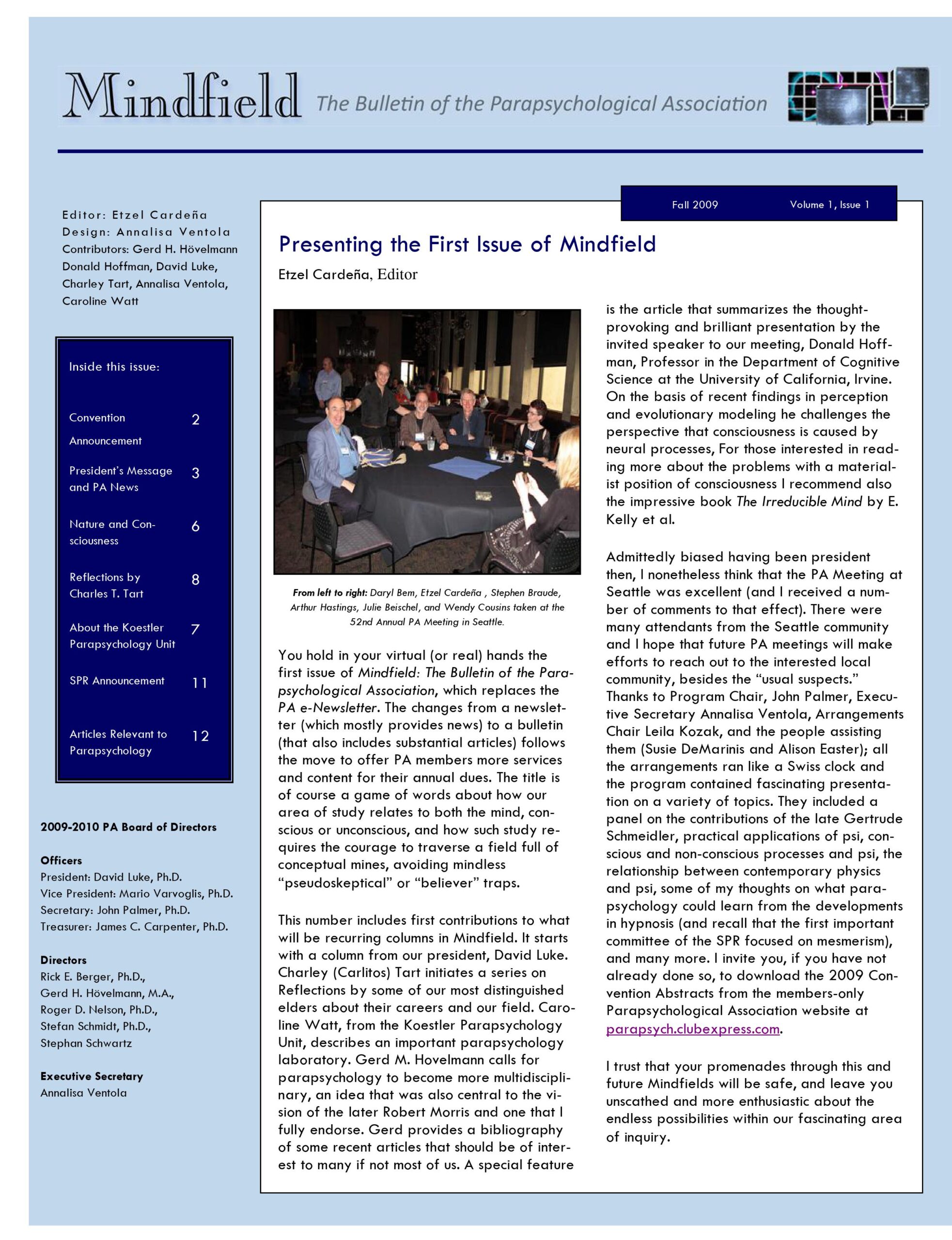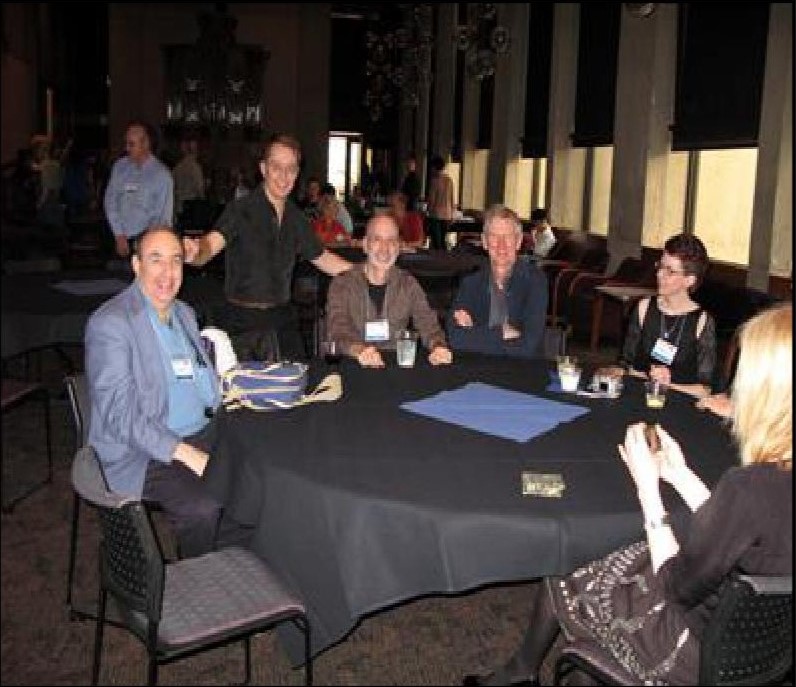by Etzel Cardeña
The original article first appeared in: Cardeña, E. (2009, Fall). Presenting the first issue of Mindfield. Mindfield: The Bulletin of the Parapsychological Association, 1(1), 1.

by Etzel Cardeña
The original article first appeared in: Cardeña, E. (2009, Fall). Presenting the first issue of Mindfield. Mindfield: The Bulletin of the Parapsychological Association, 1(1), 1.
You hold in your virtual (or real) hands the first issue of Mindfield: The Bulletin of the Parapsychological Association, which replaces the PA e-Newsletter. The changes from a newsletter (which mostly provides news) to a bulletin (that also includes substantial articles) follows the move to offer PA members more services and content for their annual dues. The title is of course a game of words about how our area of study relates to both the mind, conscious or unconscious, and how such study requires the courage to traverse a field full of conceptual mines, avoiding mindless “pseudoskeptical” or “believer” traps.

This number includes first contributions to what will be recurring columns in Mindfield. It starts with a column from our president, David Luke. Charley (Carlitos) Tart initiates a series on Reflections by some of our most distinguished elders about their careers and our field. Caroline Watt, from the Koestler Parapsychology Unit, describes an important parapsychology laboratory. Gerd M. Hovelmann calls for parapsychology to become more multidisciplinary, an idea that was also central to the vision of the later Robert Morris and one that I fully endorse. Gerd provides a bibliography of some recent articles that should be of interest to many if not most of us. A special feature is the article that summarizes the thoughtprovoking and brilliant presentation by the invited speaker to our meeting, Donald Hoffman, Professor in the Department of Cognitive Science at the University of California, Irvine. On the basis of recent findings in perception and evolutionary modeling he challenges the perspective that consciousness is caused by neural processes. For those interested in read ing more about the problems with a materialist position of consciousness I recommend also the impressive book The Irreducible Mind by E. Kelly et al.
Admittedly biased having been president then, I nonetheless think that the PA Meeting at Seattle was excellent (and I received a number of comments to that effect). There were many attendants from the Seattle community and I hope that future PA meetings will make efforts to reach out to the interested local community, besides the “usual suspects.” Thanks to Program Chair, John Palmer, Executive Secretary Annalisa Ventola, Arrangements Chair Leila Kozak, and the people assisting them (Susie DeMarinis and Alison Easter); all the arrangements ran like a Swiss clock and the program contained fascinating presentations on a variety of topics. They included a panel on the contributions of the late Gertrude Schmeidler, practical applications of psi, conscious and non-conscious processes and psi, the relationship between contemporary physics and psi, some of my thoughts on what para psychology could learn from the developments in hypnosis (and recall that the first important committee of the SPR focused on mesmerism), and many more. I invite you, if you have not already done so, to download the 2009 Convention Abstracts from the members-only Parapsychological Association website.
I trust that your promenades through this and future Mindfields will be safe, and leave you unscathed and more enthusiastic about the endless possibilities within our fascinating area of inquiry.

Welcome to Mindfield 17(2) on neurodivergence and communication. In their editorial, Jacob W. Glazier and Anastasia Wasko highlight the popularity of The Telepathy Tapes, connecting public interest and research in neurodivergence with extrasensory communication. They urge honoring the humanity of neurodivergent people while imagining a future that integrates psi into everyday life. They also present …
by Diane Hennacy with Jacob Glazier and Anastasia Wasko
by Julia Mossbridge, Maria Welch, and Jeff Tarrant